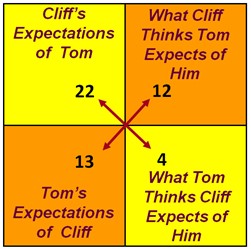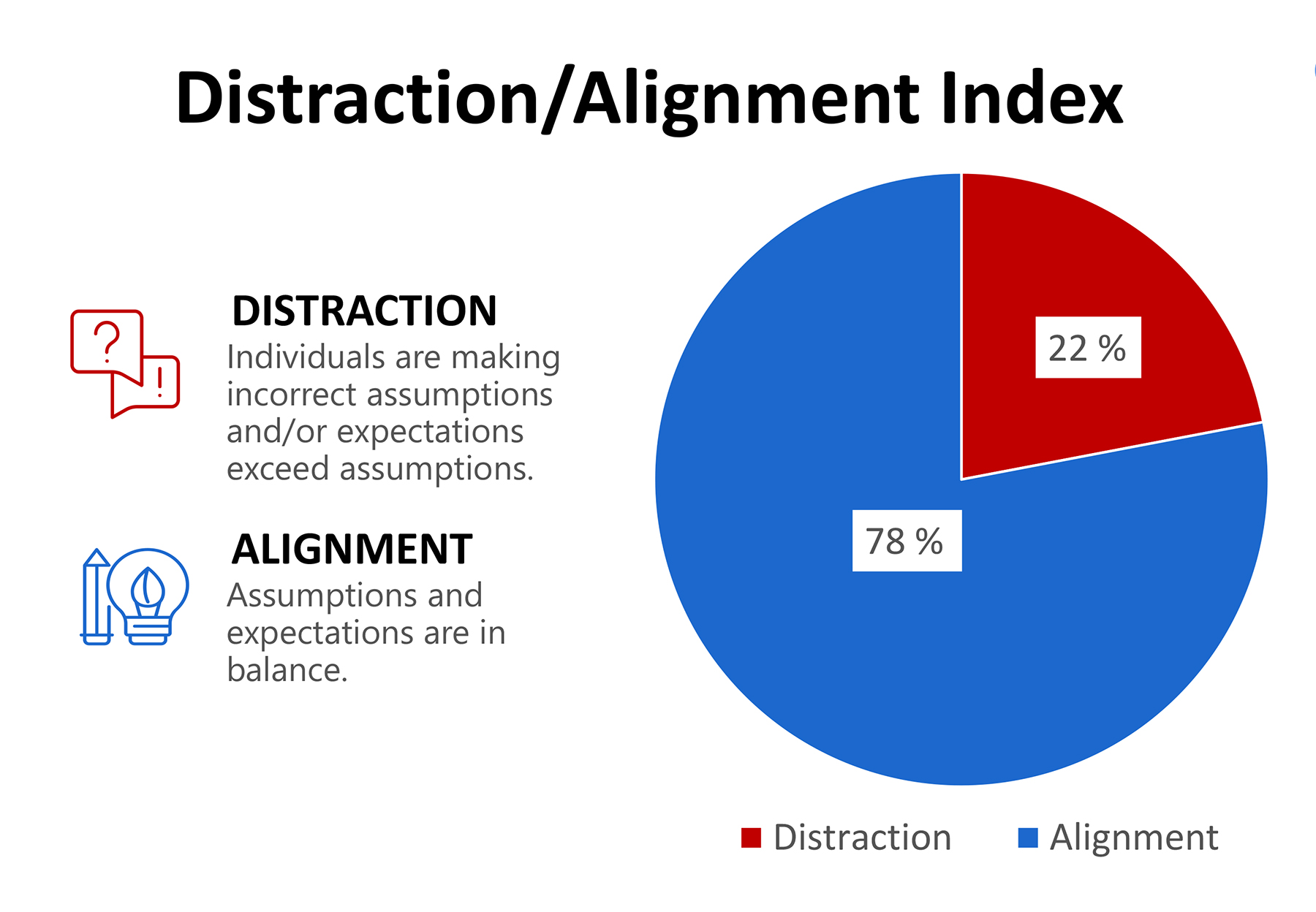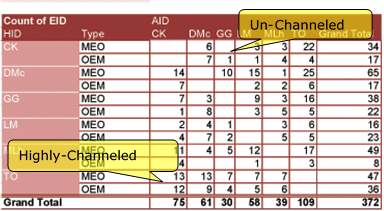How Does AlEx™ Work?
To begin the process, individuals identify their expectations using AlEx Easy Entry™, an AlEx™ tool. They include their expectations of others and what they think is expected of them. Using AlEx™ the data is analyzed for content, quantity, and quality of the expectations generated.
The AlEx™ Cross-Hairs Alignment Tool™ provides collected data and a visual image of groups and one-on-one relationships. Figure 1.
For example, the relationship between Tom and Cliff looks aligned if you only look at Tom’s expectations of Cliff (13) and what Cliff thinks Tom expects him (12). However, Cliff’s expectations of Tom (22) and what Tom thinks Cliff expects of him (4) tell a different story.
Users are shown how to use their AlEx™ Cross-Hairs Alignment Tool™ to filter data and prioritize which alignment issues are necessary to resolve. Users meet and decide which of their expectations are agreed upon, to be discarded and to remain unresolved.

AlEx™ outputs
Distraction Index
Identifies which individuals or groups are aligned or distracted from achieving strategic goals.
- Aligned and Doing things that are Expected – assumptions and expectations are in balance.
- Distracted and Doing things that are Not Expected – individuals are making incorrect assumptions about what others expect of them.
- Distracted and Expecting things that are Not Done – expectations exceed assumptions

Tension Ratings
Expectation originators rate each of their expectations on a scale from High to Low Tension if an expectation is not met. Tension ratings enable users to see how well they are aligned in terms of stress and the importance others place on different areas of the change process.

Cross-Hairs Communication Channel Analysis
Un-Channeled Expectations
During a change process, groups are often expected to change who they communicate with and about what. If for example, the Sales VP is expected to work closely with the Chief Data Analyst and her team to create customized solutions for clients, yet they don’t have any expectations of each other! Conversely, if the customer service team now reports to the newly appointed Head of Customer Service, and not the General Manager, then you wouldn’t want the customer service team still having expectations of the GM.

Cross-Channeled Expectations
Medium levels of expectations are often needed when salespeople are selling within the same customer base and need to migrate customers from one to another. For example, a customer relationship needs to change from transactional to consultative, as their needs grow and become increasingly dynamic. An account in this condition will need to be moved to the sales team who has more expertise and resources.
Highly-Channeled Expectations
High levels of expectations are needed where people work in the same function or process, for example architects and general contractors.
